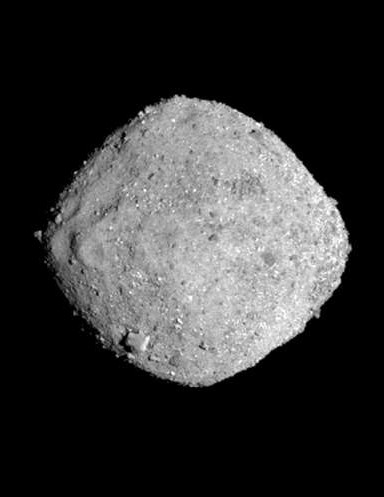Bennu samples touch down
 NASA's OSIRIS-REx has returned asteroid Bennu samples and is now jetting off to its next target.
NASA's OSIRIS-REx has returned asteroid Bennu samples and is now jetting off to its next target.
Dusty samples from asteroid Bennu, known as the “most dangerous rock in the Solar System”, have successfully made their way to Earth.
NASA's OSIRIS-REx spacecraft delivered these precious materials to the West Desert of Utah state in a capsule this week.
The OSIRIS-REx mission, which scooped up samples from Bennu's surface in 2020, aims to provide insights into Bennu's characteristics and the potential threat it poses to Earth in the next 300 years.
Beyond that, the samples hold the promise of shedding light on the formation of the Solar System 4.6 billion years ago and possibly the origins of life on our planet.
The touchdown on Department of Defense-owned desert land occurred three minutes ahead of schedule, with the capsule slowing from a blazing entry speed of over 27,000 mph with the help of a heatshield and parachutes, resulting in a gentle landing.
The successful operation drew praise from Tim Priser, the chief engineer at Lockheed Martin, who said; “This little capsule understood the assignment”.
Upon retrieval, the capsule was quickly transported to a temporary clean room at the nearby Dugway army base to avoid contamination.
The samples, estimated to weigh around 250 grams, will undergo rigorous analysis, with scientists capable of studying extremely small particles at high resolutions.
Eileen Stansbery, the chief scientist at NASA's Johnson Space Center, emphasized the significance of the sample size, saying; “We know how to slice and dice a 10 micron-sized particle into a dozen slices and to then map grain by grain at nano scales. So, 250 grams is huge.”
The cleanliness of the samples and their protection from Earth's present-day chemistry are top priorities for the mission.
The samples have already been transported to a dedicated facility at NASA's Johnson Space Center for analysis.
Scientists are eager to study the rocky material, expecting to find clay minerals, carbon compounds, and various components that provide clues about the early Solar System.
NASA plans to hold a press conference on October 11 to share initial findings, and smaller specimens will be distributed to research teams worldwide, with results expected within two years.
Additionally, 75 per cent of the sample will be preserved for future generations to study with advanced instruments in labs yet to be established.
OSIRIS-REx is an ongoing mission that recently accomplished its primary goal of returning Bennu samples to Earth. However, it is not the end of the mission.
The spacecraft is set to study another near-Earth asteroid, Apophis, in 2029.
OSIRIS-REx's journey has already included a successful flyby of Earth in 2017 to gain speed for its voyage to Bennu. It set records for the closest orbit of a small body, at just 1 mile (1.6 kilometres) from the surface.
The spacecraft's mission concluded with a precise touchdown on Bennu's surface, collecting much more than the targeted 60 grams of asteroid material.
OSIRIS-REx departed Bennu in May 2021, and the sample capsule landed on Earth on September 24, 2023.
The next phase of the mission, named OSIRIS-REx-APEX, presents the opportunity to gain insights into two different types of asteroids, as Bennu and Apophis have distinct compositions. Bennu is rich in carbon-based material, while Apophis belongs to the S-type asteroid family.
Understanding these asteroids is essential for deciphering the early Solar System's history and planet formation.
OSIRIS-REx's research will also contribute to monitoring potentially hazardous asteroids and studying the Yarkovsky effect, which affects their trajectories due to solar heating.







 Print
Print